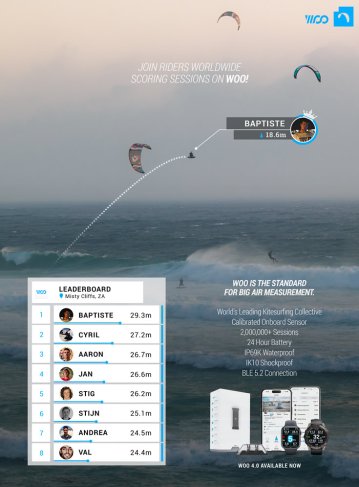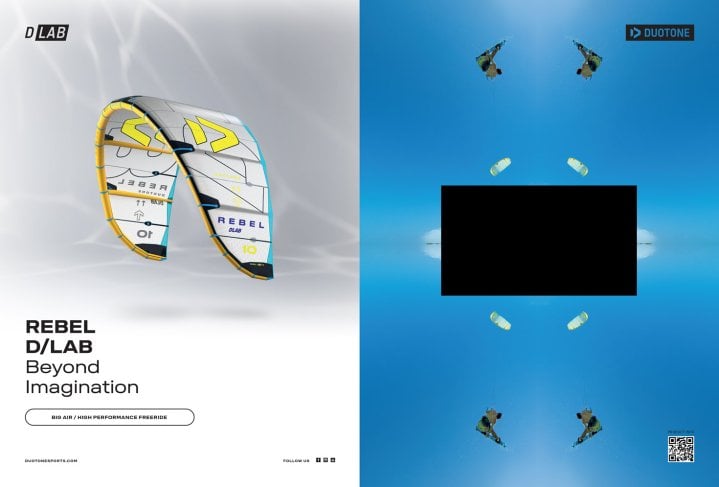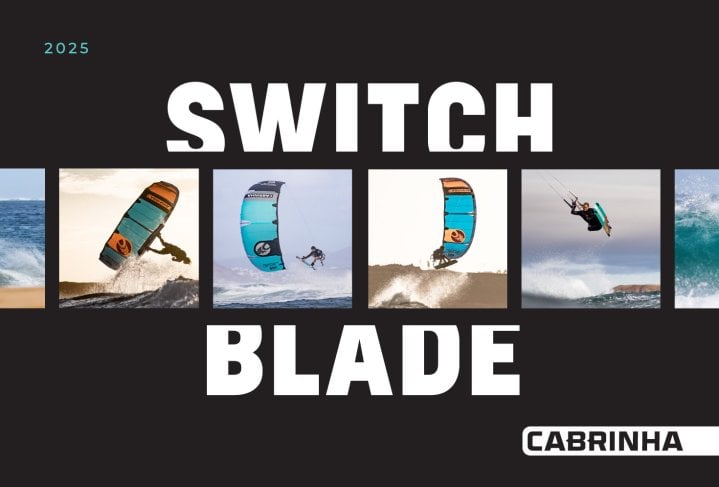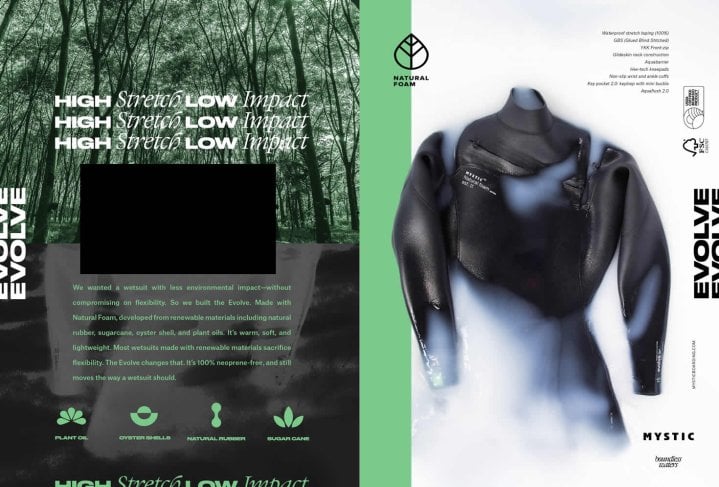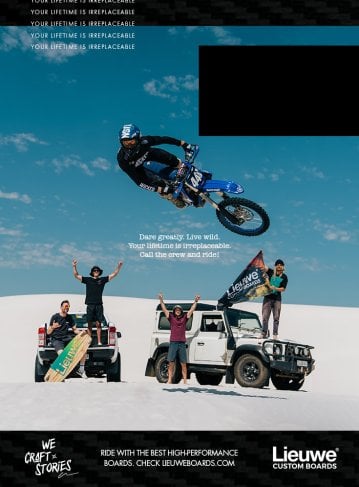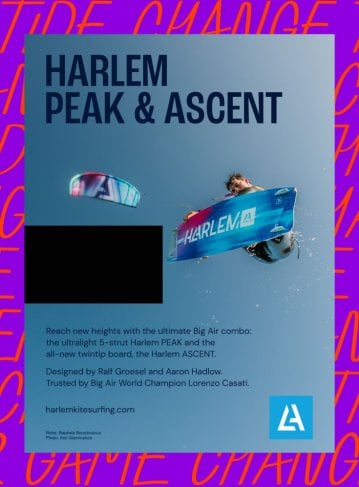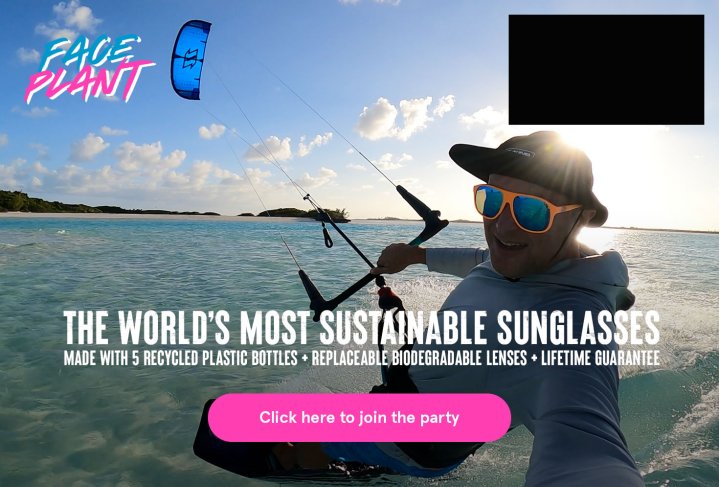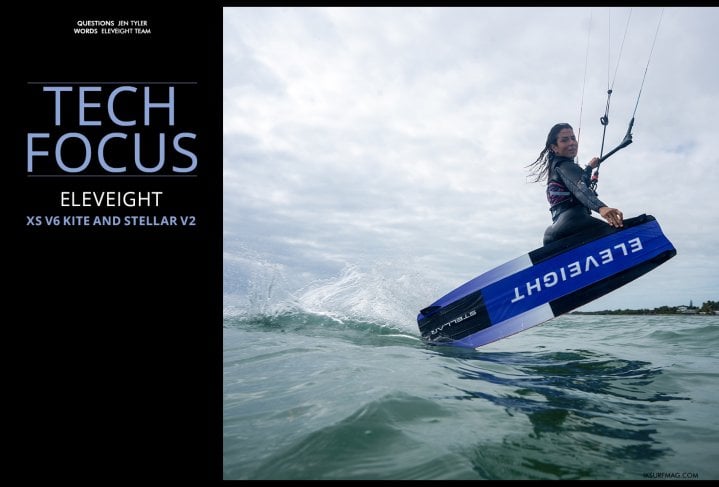
Tech Focus: Eleveight XS V6 kite and Stellar V2
Issue 111 / Wed 25th Jun, 2025
We caught up with the Eleveight team to unpack the biggest V6 kite and Stellar V2 updates like faster loops, improved materials, and insane grip. Here’s everything you need to know about these two big air machines!
Hi! We’re stoked to hear about Eleveight’s latest releases: the XS V6 kite and Stellar V2 twintip. Let’s start with the XS V6. What are the main design changes in the XS V6, and how do they improve performance over the previous version?
Big air is constantly evolving, and with it, riders’ demands shift year by year. This is incredibly exciting for our development team because we’re constantly challenged to meet new expectations and push performance further. Now in its sixth version, the XS was born as a pure big air kite, engineered for boosting and explosive lift. Over time, it’s gone through numerous incremental refinements, but the standout evolution in V6 is its turning speed.
Modern big air is all about radical, controlled loops, and to meet that, we slightly reduced the kite’s aspect ratio to achieve a tighter turn radius. This lets the kite loop faster and with slightly less power, giving riders better control, which is especially important for technical tricks like board-offs and spins. We also reshaped the leading edge arc to increase the projected area, enhancing low-end power and supporting improved turning ability.
We’ve introduced X6 ripstop material for version six in key areas like the trailing edge and wingtips. Big air puts huge pressure on a kite, and by strategically placing this stronger 6x6 ripstop fabric, we’ve reduced elongation and created smoother power transitions between materials. It allows the kite to hold its shape better under load and recover faster, which means it’s more reactive and has improved longevity.
We also added a bridle trim setting, allowing riders to customise the turning speed to suit their style and conditions. Whether you’re an old-school booster looking for maximum hangtime and smooth turning or chasing ultra-fast pivots and double loops, the XS V6 can be tweaked to your style.
For the old-school booster, we still have the tip setting with a lot of hangtime, which is a bit more forgiving in the turn. However, the pivot set-up transforms the XS into a super fast-turning kite, which lets you do double loops like never before!
Compared to earlier models, how does the XS V6 handle in marginal wind conditions?
In marginal wind, a 5-strut kite will always carry a bit more weight, which you feel at the low end, but for V6, we made specific changes to counter that. By adjusting the leading edge arc and increasing the projected area, we improved the kite’s low-end efficiency compared to previous versions.
For a rider who’s used to previous XS models, what’s the biggest performance upgrade they’ll feel straight away?
The most noticeable difference is the turning speed and the increased reactivity of the bar. Don’t get me wrong, previous versions already had solid turning speed, but they focused more on hangtime and delivering that grunty, raw power. V6 keeps that DNA but takes it further with faster loops and more agility.
Experienced riders will love the faster speeds, quicker loops, and a touch less brute force, which makes it easier to control mid-manoeuvre. The new materials also play a big part here, as reduced deformation under load improves how quickly the kite recovers, which is really noticeable in stronger winds.
Any specific conditions where the XS V6 truly shines or surprised you with its performance?
The name says it all: ‘Extreme Series’! The XS V6 absolutely shines when you’re aiming to jump high. That doesn’t necessarily mean you need insane wind, though, of course, when it’s pumping, the 5-strut frame comes alive and accelerates even more.
What really surprises people is the wow factor you get when you load up and take off, as the lift is explosive and the hangtime endless. This is also a deal breaker for heavier riders who often deal with kite deformation in strong winds. These riders generate more load naturally and need a kite that holds its shape. The XS V6’s solid frame delivers exactly that, and the performance difference is something they feel instantly.
On to the Stellar V2! What were the main updates for the Stellar V2, and how does it differ from V1?
The success of V1 took us by storm. When we first started working on it, we weren’t sure how it would sit alongside our Master C+, but Franz Schitzhofer was confident the design would hit the mark for big air, and he absolutely nailed it!
For V2, we kept the same proven outline but introduced a few strategic upgrades. We refined the internal layups and adjusted the tip shape to boost performance. One major update is the new carbon reinforcements on the top deck, which reduce tip flex and improve rebound. Combined with the reshaped tips, the result is a board that feels even grippier and more aggressive underfoot.
It’s not a complete reinvention as V1 and V2 share the same core philosophy, but big air riders will appreciate V2 immediately. As we like to say: you go big or you go home!
How was the outline redesigned for V2, and how does it change the board’s handling in choppy or gusty conditions?
With twintips, we don’t change the mould every year as there’s a lot of work and investment behind each one, so we typically aim to use a mould for two to three years. That said, each mould still gives us room to evolve the design through things like rocker line adjustments, tip shaping, wood core thickness, and layup changes. For V2, we focused on layup refinements and tip tuning as they can significantly impact performance.
But back to your question... V1 and V2 are very grippy based on their channel layout and tip form, which translates into performance in gusty conditions. Since big air sessions often happen in strong wind and chop, we made sure the Stellar could handle that. Both versions handle well in these conditions, remain predictable, and hold speed even when the water’s messy.
Is the Stellar V2 intended to be used strictly with boots, straps or either?
These days, most of the big air community is riding with straps, especially since so many tricks are board-offs or crazy one-footers. That said, the Stellar is built tough. It features our heavy-duty plywood insert blocks, which are more than capable of handling the load, even in boots.
The Stellars outline, flex, and responsiveness are performance characteristics optimised for use with foot straps. It’s an extreme freeride board, and that’s the setup we used during development and testing. So, while boots are totally possible, the board really comes into its own with straps.
What size would you recommend for riders just starting to push Big Air tricks but still want freeride versatility?
Board size depends greatly on rider weight, height, and personal preferences, but as a general rule, go for the 139 if you’re heavier. The 136 is excellent for average-weight riders, especially around or under 80kg.
Both sizes are excellent for getting into big air. They offer solid grip, aggressive pop, and responsive feedback, yet still deliver the versatility of a high-performance freeride board. The 133 is ideal for lighter riders or those looking for a board for nuking wind days, but it’s more of a specialist size best suited to experienced riders who already have extreme big air experience.
What’s the first thing riders notice when they step on the Stellar V2?
Grip! That’s the first and most immediate impression. The Stellar features a multi-concave bottom with well-placed channels that optimise water flow and generate massive hold through the rails, crucial for loading up for a big jump.
The second standout feature is the damping and optimised flex. The basalt fibre layup delivers a very dynamic response with enough stiffness for a solid pop on takeoff, yet enough flex to dampen landings. Unlike full carbon, which can sometimes feel too stiff and harsh, basalt offers a nice balance. It gives you that springy energy without punishing your knees on impact.
What type of rider will get the most out of the Stellar V2, and who might be better suited to a different board style?
Like the XS, the name ‘Stellar’ hints at its intention for riders looking to take their session to the stars. If you aim for height and precision, the Stellar is for you. It’s built for ambitious freeriders who like to push big air but also want something they can ride in all conditions and mix things up.
I wouldn’t recommend the Stellar as a beginner’s board, as we have other models that are better suited for learning and progression. Likewise, for freestyle-focused riders, there are more specialised boards in our range. The Stellar’s narrower tips don’t offer the pop or landings that freestyle demands, but it’s a top choice for riders chasing height, versatility, and control!
Videos
By Jen Tyler
Italian/Egyptian Jen Tyler grew up on the sandy beaches of the Red Sea and has been on the IKSURFMAG & Tonic Mag team since 2017.


